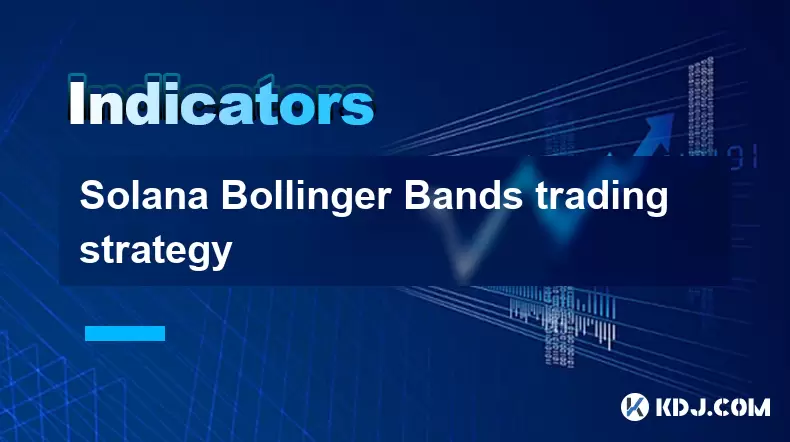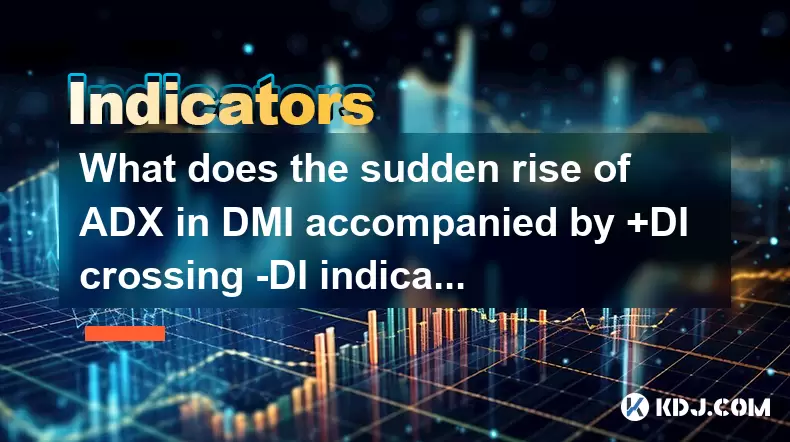-
 Bitcoin
Bitcoin $117400
1.93% -
 Ethereum
Ethereum $3747
3.63% -
 XRP
XRP $3.157
3.09% -
 Tether USDt
Tether USDt $1.000
0.02% -
 BNB
BNB $783.3
3.19% -
 Solana
Solana $186.6
5.64% -
 USDC
USDC $0.9999
0.01% -
 Dogecoin
Dogecoin $0.2375
5.42% -
 TRON
TRON $0.3185
1.32% -
 Cardano
Cardano $0.8191
3.28% -
 Hyperliquid
Hyperliquid $44.43
5.76% -
 Sui
Sui $3.995
9.84% -
 Stellar
Stellar $0.4396
6.27% -
 Chainlink
Chainlink $18.26
4.83% -
 Hedera
Hedera $0.2646
11.88% -
 Bitcoin Cash
Bitcoin Cash $553.5
5.55% -
 Avalanche
Avalanche $24.13
4.73% -
 Litecoin
Litecoin $113.3
1.77% -
 UNUS SED LEO
UNUS SED LEO $8.975
0.11% -
 Shiba Inu
Shiba Inu $0.00001405
5.69% -
 Toncoin
Toncoin $3.319
7.46% -
 Ethena USDe
Ethena USDe $1.001
0.02% -
 Uniswap
Uniswap $10.44
4.98% -
 Polkadot
Polkadot $4.098
4.31% -
 Monero
Monero $328.6
1.87% -
 Dai
Dai $1.000
0.01% -
 Bitget Token
Bitget Token $4.561
2.76% -
 Pepe
Pepe $0.00001261
5.29% -
 Aave
Aave $296.8
4.02% -
 Cronos
Cronos $0.1335
3.28%
Solana Bollinger Bands trading strategy
Bollinger Bands help Solana traders identify volatility and potential price reversals by analyzing how SOL's price interacts with upper and lower bands.
Jul 12, 2025 at 06:14 pm

Understanding Bollinger Bands in the Context of Solana Trading
Bollinger Bands are a widely used technical analysis tool developed by John Bollinger. They consist of three lines: a simple moving average (SMA) in the middle, with an upper and lower band that represent standard deviations from the SMA. In the context of Solana (SOL) trading, these bands help traders assess volatility and potential price reversals.
When applied to Solana's price chart, the bands expand when volatility increases and contract during calmer market conditions. Traders often look for price touching or crossing the bands as signals for overbought or oversold conditions. However, it's crucial to remember that Bollinger Bands alone should not dictate trade entries or exits without additional confirmation indicators.
How to Set Up Bollinger Bands for Solana Trading
Setting up Bollinger Bands on a Solana chart is straightforward but requires attention to detail for optimal performance. Most trading platforms such as TradingView, Binance, or KuCoin allow users to apply this indicator directly onto their charts.
- Open your preferred trading platform.
- Navigate to the Solana/USDT or SOL/BTC pair.
- Click on the indicators menu and search for Bollinger Bands.
- Apply the default settings: 20-period SMA with 2 standard deviations.
- Customize colors if needed for better visibility.
Once set, observe how Solana’s price interacts with the bands across different timeframes — typically, 1-hour, 4-hour, or daily charts yield more reliable signals than shorter intervals.
Identifying Entry and Exit Points Using Bollinger Bands on Solana
One of the most common strategies involves buying when the price touches the lower band and selling when it reaches the upper band. However, this approach can be misleading in strong trending markets.
For example:
- If Solana's price repeatedly touches the lower Bollinger Band and starts to move upward, it may indicate a potential bullish reversal.
- Conversely, repeated touches of the upper band might suggest overbought conditions and a possible pullback.
To enhance accuracy:
- Combine Bollinger Bands with RSI (Relative Strength Index) to confirm overbought or oversold levels.
- Watch for breakouts beyond the bands, which may signal strong momentum continuing in that direction.
- Use candlestick patterns near the bands to confirm trend continuation or reversal.
Managing Risk with Bollinger Bands in Solana Trades
Risk management is essential when applying any technical strategy, especially in the volatile crypto market. When using Bollinger Bands for Solana, consider the following:
- Place stop-loss orders just below the lower band when going long, or above the upper band when shorting.
- Adjust position sizes based on volatility readings from the bands — wider bands mean higher risk.
- Avoid entering trades solely based on band touches without volume confirmation or trend alignment.
Additionally:
- Monitor news events or macroeconomic factors that could cause sudden spikes in Solana’s price, potentially invalidating your Bollinger Band-based setup.
- Use trailing stops to protect profits when the price moves favorably beyond the bands.
Combining Bollinger Bands with Other Indicators for Solana Strategy
Relying solely on Bollinger Bands can lead to false signals, particularly in sideways or choppy markets. To improve reliability, integrate complementary tools:
- MACD (Moving Average Convergence Divergence) – Helps identify trend changes and confirms momentum when Solana approaches either band.
- Volume Profile – High volume near the bands increases the likelihood of a reversal or breakout.
- Ichimoku Cloud – Offers insight into trend strength and potential support/resistance zones.
For instance:
- If Solana hits the upper Bollinger Band while the MACD line crosses below the signal line, it may signal a bearish reversal.
- A confluence of the price hitting the lower band and a bullish candlestick pattern with rising volume may indicate a strong buy opportunity.
Frequently Asked Questions
What timeframe works best for Bollinger Bands when trading Solana?
The 4-hour and daily charts tend to provide the most reliable signals due to reduced noise compared to shorter timeframes like 5-minute or 15-minute intervals.
Can Bollinger Bands predict Solana price accurately?
They do not predict prices directly but offer insights into volatility and potential reversal points. Always use them alongside other indicators for confirmation.
Why does Solana sometimes break through the Bollinger Bands without reversing?
Strong market sentiment or news-driven moves can cause trend continuation beyond the bands. This behavior indicates powerful momentum rather than exhaustion.
Is it safe to short Solana when it touches the upper Bollinger Band?
Shorting based solely on upper band contact is risky unless confirmed by bearish candlesticks, declining volume, or bearish divergence in momentum indicators.
Disclaimer:info@kdj.com
The information provided is not trading advice. kdj.com does not assume any responsibility for any investments made based on the information provided in this article. Cryptocurrencies are highly volatile and it is highly recommended that you invest with caution after thorough research!
If you believe that the content used on this website infringes your copyright, please contact us immediately (info@kdj.com) and we will delete it promptly.
- Wall Street's Bitcoin Bonanza: ETF Filings Signal Crypto's Coming-Out Party
- 2025-07-26 15:10:12
- Bitcoin, Cynthia Lummis, and Freedom Money: A New York Perspective
- 2025-07-26 15:10:12
- Bitcoin, Altcoin Season, and Market Shift: What's the Deal?
- 2025-07-26 14:30:12
- PEPE, Altcoins, and Bitcoin: Navigating the Meme Coin Mania in 2025
- 2025-07-26 14:30:12
- UAE's Digital Asset Revolution: Stablecoin Regulations Take Center Stage
- 2025-07-26 10:40:11
- Whale Transactions and ENA Token: Decoding the Withdrawal Dynamics
- 2025-07-26 14:50:12
Related knowledge

What does it mean that the rebound is blocked after the moving average is arranged in a short position for the first time?
Jul 26,2025 at 10:51am
Understanding the Short-Term Moving Average ConfigurationWhen traders refer to a 'short position arrangement' in moving averages, they are describing ...

What does it mean when the price rises along the 5-day moving average for five consecutive days?
Jul 26,2025 at 08:07am
Understanding the 5-Day Moving Average in Cryptocurrency TradingThe 5-day moving average (5DMA) is a widely used technical indicator in cryptocurrency...

What does it mean when the price breaks through the 60-day moving average with a large volume but shrinks the next day?
Jul 26,2025 at 06:01am
Understanding the 60-Day Moving Average in Cryptocurrency TradingThe 60-day moving average (60DMA) is a widely used technical indicator in the cryptoc...

What does the sudden rise of ADX in DMI accompanied by +DI crossing -DI indicate?
Jul 26,2025 at 01:21pm
Understanding the DMI and Its Core ComponentsThe Directional Movement Index (DMI) is a technical analysis tool used to determine the presence and stre...

What does it mean when OBV continues to hit new highs but the price is stagnant?
Jul 26,2025 at 09:57am
Understanding the On-Balance Volume (OBV) IndicatorThe On-Balance Volume (OBV) is a technical analysis indicator that uses volume flow to predict chan...

What does the golden cross of EMA12 and EMA26 but the low trading volume reflect?
Jul 26,2025 at 06:44am
Understanding the Golden Cross in EMA12 and EMA26The golden cross is a widely recognized technical indicator in the cryptocurrency market, signaling a...

What does it mean that the rebound is blocked after the moving average is arranged in a short position for the first time?
Jul 26,2025 at 10:51am
Understanding the Short-Term Moving Average ConfigurationWhen traders refer to a 'short position arrangement' in moving averages, they are describing ...

What does it mean when the price rises along the 5-day moving average for five consecutive days?
Jul 26,2025 at 08:07am
Understanding the 5-Day Moving Average in Cryptocurrency TradingThe 5-day moving average (5DMA) is a widely used technical indicator in cryptocurrency...

What does it mean when the price breaks through the 60-day moving average with a large volume but shrinks the next day?
Jul 26,2025 at 06:01am
Understanding the 60-Day Moving Average in Cryptocurrency TradingThe 60-day moving average (60DMA) is a widely used technical indicator in the cryptoc...

What does the sudden rise of ADX in DMI accompanied by +DI crossing -DI indicate?
Jul 26,2025 at 01:21pm
Understanding the DMI and Its Core ComponentsThe Directional Movement Index (DMI) is a technical analysis tool used to determine the presence and stre...

What does it mean when OBV continues to hit new highs but the price is stagnant?
Jul 26,2025 at 09:57am
Understanding the On-Balance Volume (OBV) IndicatorThe On-Balance Volume (OBV) is a technical analysis indicator that uses volume flow to predict chan...

What does the golden cross of EMA12 and EMA26 but the low trading volume reflect?
Jul 26,2025 at 06:44am
Understanding the Golden Cross in EMA12 and EMA26The golden cross is a widely recognized technical indicator in the cryptocurrency market, signaling a...
See all articles

























































































